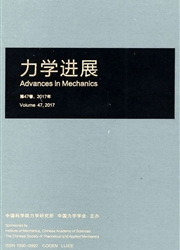

 中文摘要:
中文摘要:
硅负极材料由于具有非常高的理论比容量,使之成为锂离子电池极具前景的负极替代材料.然而,硅负极材料在充放电过程中会发生非常大的体积变形,这会引起活性材料的破坏失效,严重影响其电化学循环性能,成为制约其在锂离子电池领域广泛应用的最大瓶颈.本文介绍了硅负极材料的不同结构形态及其在充放电过程中电化学性能的退化机理,并综述了充放电过程中的力学性能演化、相关理论分析、数值模拟计算等方面的最新国际研究进展,展望了硅负极材料力学失效方面的研究重点.
 英文摘要:
英文摘要:
Silicon anode materials have very high theoretical specific capacity, hence become promising replacement for anode material of lithium-ion batteries. However, during charging and discharging, silicon anode materials suffer big volume deformation that may cause destruction and failure of the active material. This seriously affects the electrochemical cycle performance, and restricts wide applications in the field of lithium-ion batteries. In this paper, we introduce silicon anode materials of different structure form, and the degradation mechanism of the electrochemical properties during charging and discharging. We summarize the latest international research progress in mechanical properties evolution of charging and discharging process, the related theoretical analysis, numerical simulations, and prospects for research emphasis of the mechanical failure in silicon anode materials.
 同期刊论文项目
同期刊论文项目
 同项目期刊论文
同项目期刊论文
 Measurement of the mechanical properties of nickel film based on the full-field deformation: An impr
Measurement of the mechanical properties of nickel film based on the full-field deformation: An impr From chemistry to mechanics: bulk modulus evolution of Li–Si and Li–Sn alloys via the metallic elect
From chemistry to mechanics: bulk modulus evolution of Li–Si and Li–Sn alloys via the metallic elect Gram-scale and template-free synthesis of ultralong tin disulfide nanobelts and their lithium ion st
Gram-scale and template-free synthesis of ultralong tin disulfide nanobelts and their lithium ion st Facile synthesis of P2-type Na0.4Mn0.54Co0.46O2 as a high capacity cathode material for sodium-ion b
Facile synthesis of P2-type Na0.4Mn0.54Co0.46O2 as a high capacity cathode material for sodium-ion b Facile Synthesis of Highly Porous Ni–Sn Intermetallic Microcages with Excellent Electrochemical Perf
Facile Synthesis of Highly Porous Ni–Sn Intermetallic Microcages with Excellent Electrochemical Perf Electrospun Spinel LiNi0.5Mn1.5O4 Hierarchical Nanofibers as 5V Cathode Materials for Lithium-Ion Ba
Electrospun Spinel LiNi0.5Mn1.5O4 Hierarchical Nanofibers as 5V Cathode Materials for Lithium-Ion Ba 期刊信息
期刊信息
